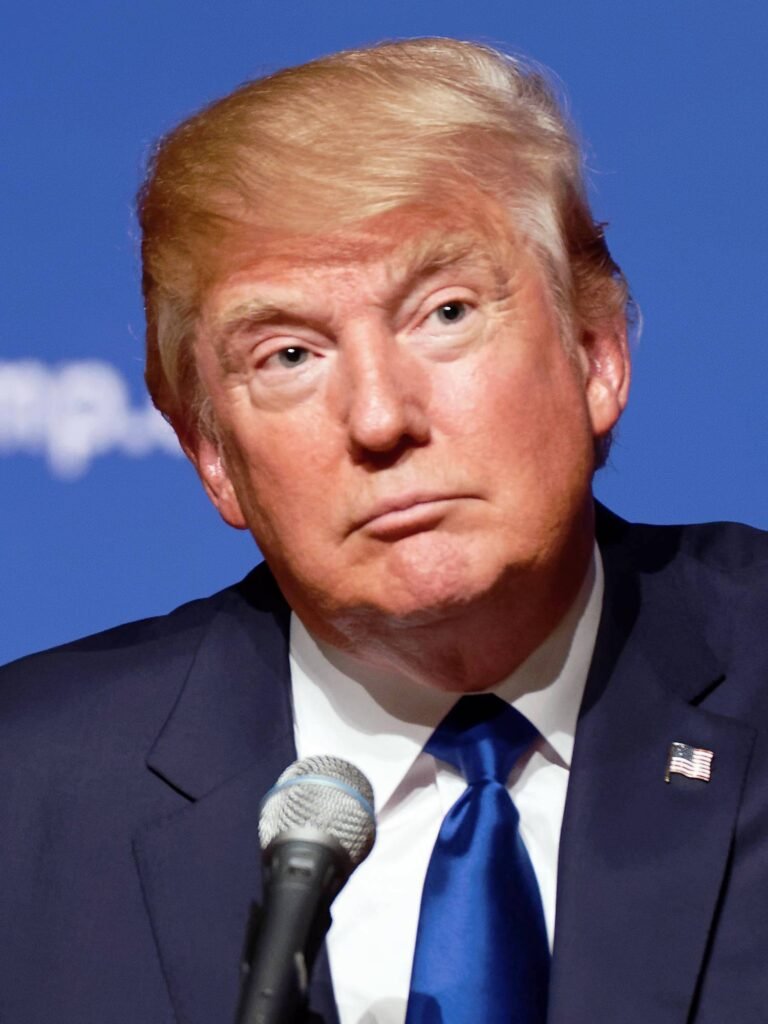World News
Dan Gwak of Point72 Ventures on why defense tech is becoming the next big thing for investors on August 5, 2023 at 4:48 am
Dan Gwak has had a more varied life than many investors. He grew up in Jakarta, the son of Korean parents who ran a shipping business. After high school, he headed to Cornell in the U.S., and became an associate at The Carlyle Group.
Everything was moving up and to the right, so to speak. Then, like a gut punch, the financial recession hit in 2008.
Gwak was among many who suddenly found themselves on uneven footing and evaluating their next steps. Unlike most of his young investing banking peers, Gwak quickly decided to join the U.S. Marine Corps as a machine gunner. It seemed like a natural decision, given that in Korea, where military service is compulsory for men between ages 18 and 35, both Gwak’s father and brother had served. It was also Gwak’s way of “becoming American,” he says.
While he wasn’t expecting his service to end four years later in Afghanistan – he was wounded and sent home – Gwak again didn’t waste much time deliberating about his next moves. He applied and was accepted to Harvard Business School, and nearly since that time, he has been investing at the intersection of national security and technology. Out of school, he joined In-Q-Tel, which is the venture arm of the CIA. In 2017, when the billionaire hedge fund manager “Stevie” Cohen decided to build out a venture practice — Point72 Ventures — he poached Gwak, and Gwak has remained active since, including leading a 50-person team that has invested more than $1 billion into roughly 130 companies on Cohen’s behalf.
The deals range across four key areas: deep tech, fintech, enterprise and defense tech. But in a lengthy conversation with Gwak earlier today, he talked the longest about defense tech as he’s passionate about it and because the way he sees it, Washington is focused more than ever on the global balance of power — and looking for any edge it can find. Below are excerpts from that part of our chat, edited lightly for length and clarity. You can listen to the entire conversation here.
TechCrunch: You have these four areas on which you’re focused, but fintech has cooled off after several frothy years, defense tech now seems top of mind for investors. Is that true inside Point72?
Dan Gwak: Absolutely. If you rewind the clock, fintech was an area that was very hot and we were very active in deploying a lot of capital. Today, the area that’s really come up is defense tech. It’s not just that the market in general has corrected, but rather, I think defense tech, specifically as an opportunity, has really [gained traction] among other venture investors, as well as founders [along with a growing] awareness of the importance of defense tech to the government.
Given your experience over the years, working for and selling to the government, does the sales process move any more quickly than historically? The longstanding knock, of course, is that it’s too bureaucratic and there’s too much red tape to get past.
Even five years ago, I would have told you that defense tech investing the way that we think about it – which is investing in companies whose primary customer is going to be the Department of Defense – is a bad idea for exactly the reason that you describe. But that has changed for a couple of big reasons. First of all, the government is generally inefficient at buying things until something comes along that has the potential to shift the global superpower balance, and that’s what you’re seeing today. If you look at the last time that happened, that was probably pursuing the atom bomb and the Manhattan Project. When you look at things like AI and all the ways it applies – whether that’s autonomy or computer vision or natural language processing – these are all things that absolutely can shift the global superpower balance, and the government sees that now. And when the government sees that, then it becomes much, much better at buying things.
It seems like a portfolio company of yours, Shield AI, falls into this category. [Editor’s note: Shield AI develops AI-powered fighter pilots and drones that it sells to the U.S. Air Force and U.S Army.]
Autonomous drone swarms do have the ability to shift the global superpower balance, whoever gets that right and can release a drone swarm of thousands. That is an approach [against which there are] just not good defenses against today, even if you own the largest aircraft carrier fleet in the universe. [And because a company like Shield AI can help in] the future preparedness of America, it can, as a result, get a lot of the funding that comes out of the government. It used to be because of the slower sales cycles and so forth, you had to kind of count on the prize being larger but taking longer to get to. [Today] we’re finally entering a time where, as long as you align with something that really, really matters to the government and you can connect the dots effectively, you can grow that business as quickly as as any commercial business,
What has Ukraine meant for its business?
Ukraine’s impact on defense tech has been a very catalyzing one. Everyone understood even before Ukraine that drone swarms and the effective use of attritable technologies and things like that could have a very big impact. Ukraine just serves to highlight that In real life. When you look at what’s going on there, that effective use of drones has had a massive impact in that battlefield.
So-called slaughterbots are autonomous drones that are programmed to kill people without any human intervention. How does a company like Shield AI deal with potential customers that might misuse its technology?
I don’t want to speak on the company’s behalf on that topic because it is a conversation that the company should have with its customers, and I’m not necessarily in those conversations. However, I think the overall topic — the danger posed by autonomy when it comes to taking human beings out of that decision to attack — is a very interesting one. To my mind, it’s all about system design. Any weapon in the world that has a kinetic effect can be very, very dangerous — to the enemy, to ourselves, and to noncombatants who just happen to be in the wrong place at the wrong time.That’s why when you look at all these kinetic systems, there’s always good system design around the decision to take an action, and a human being is usually in the loop. When it comes to this new wave of technology, it’s not like we’re throwing that concept of safety out the window. Good, sound, system design, as informed by the risks that we are willing to subject ourselves to, is always going to be an important part of the equation.
The U.S. government is a big customer that can demand that things are tailored for its purposes. Does it preclude these companies from selling to other governments? How does that work? Do they have to get buy in from Washington?
It depends on what other country we’re talking about [laughs]. To contextualize with numbers, though, the overall spending of the United States and all of its allies on defense is $1.6 trillion. That is a gigantic market. It is an order of magnitude larger than the commercial SaaS market. Of that 1.6 trillion, fully 50% of it is just the U.S. So when you see defense tech companies so focused on the U.S. defense market, there’s a good sound reason for that. That [also] means that if that largest part of the market is asking you not to interact with nations that might be adversarial to the United States, you’re going to respect that.
Are the investors interested in these deals changing at all? I know who some of the players are — you, In-Q-Tel, Lux. . . .
Lux is certainly one that’s been investing where deep tech meets defense tech for a while. [There]’s also Founders Fund, 8VC, a16z as part of their American dynamism effort. There is a core group of half a dozen or so that have been focused on defense tech for for a while. Now I’m seeing additional investors, tier one venture investors, who were not necessarily historically interested in defense tech, start to be a lot more interested. That that’s a good thing. The opportunity is just so large. If you think about it, the DoD has an $800 billion budget and only 1% of that today goes to startups.
That’s an incredible stat. I guess I have the headline to this story now. Who gets the rest? Lockheed Martin?
It’s largely the defense primes today, which serve an important purpose. But the truly transformational technologies that the DoD needs to be able to harness in the next 10 years, those are going to come from startups.
Dan Gwak has had a more varied life than many investors. He grew up in Jakarta, the son of Korean parents who ran a shipping business. After high school, he headed to Cornell in the U.S., and became an associate at The Carlyle Group. Everything was moving up and to the right, so to speak.
News
US May Completely Cut Income Tax Due to Tariff Revenue

President Donald Trump says the United States might one day get rid of federal income tax because of money the government collects from tariffs on imported goods. Tariffs are extra taxes the U.S. puts on products that come from other countries.

What Trump Is Saying
Trump has said that tariff money could become so large that it might allow the government to cut income taxes “almost completely.” He has also talked about possibly phasing out income tax over the next few years if tariff money keeps going up.
How Taxes Work Now
Right now, the federal government gets much more money from income taxes than from tariffs. Income taxes bring in trillions of dollars each year, while tariffs bring in only a small part of that total. Because of this gap, experts say tariffs would need to grow by many times to replace income tax money.
Questions From Experts
Many economists and tax experts doubt that tariffs alone could pay for the whole federal budget. They warn that very high tariffs could make many imported goods more expensive for shoppers in the United States. This could hit lower- and middle‑income families hardest, because they spend a big share of their money on everyday items.
What Congress Must Do
The president can change some tariffs, but only Congress can change or end the federal income tax. That means any real plan to remove income tax would need new laws passed by both the House of Representatives and the Senate. So far, there is no detailed law or full budget plan on this idea.

What It Means Right Now
For now, Trump’s comments are a proposal, not a change in the law. People and businesses still have to pay federal income tax under the current rules. The debate over using tariffs instead of income taxes is likely to continue among lawmakers, experts, and voters.
News
Epstein Files to Be Declassified After Trump Order

Former President Donald Trump has signed an executive order directing federal agencies to declassify all government files related to Jeffrey Epstein, the disgraced financier whose death in 2019 continues to fuel controversy and speculation.
The order, signed Wednesday at Trump’s Mar-a-Lago estate, instructs the FBI, Department of Justice, and intelligence agencies to release documents detailing Epstein’s network, finances, and alleged connections to high-profile figures. Trump described the move as “a step toward transparency and public trust,” promising that no names would be shielded from scrutiny.
“This information belongs to the American people,” Trump said in a televised statement. “For too long, powerful interests have tried to bury the truth. That ends now.”
U.S. intelligence officials confirmed that preparations for the release are already underway. According to sources familiar with the process, the first batch of documents is expected to be made public within the next 30 days, with additional releases scheduled over several months.
Reactions poured in across the political spectrum. Supporters praised the decision as a bold act of accountability, while critics alleged it was politically motivated, timed to draw attention during a volatile election season. Civil rights advocates, meanwhile, emphasized caution, warning that some records could expose private victims or ongoing legal matters.
The Epstein case, which implicated figures in politics, business, and entertainment, remains one of the most talked-about scandals of the past decade. Epstein’s connections to influential individuals—including politicians, royals, and executives—have long sparked speculation about the extent of his operations and who may have been involved.

Former federal prosecutor Lauren Fields said the release could mark a turning point in public discourse surrounding government transparency. “Regardless of political stance, this declassification has the potential to reshape how Americans view power and accountability,” Fields noted.
Officials say redactions may still occur to protect sensitive intelligence or personal information, but the intent is a near-complete disclosure. For years, critics of the government’s handling of Epstein’s case have accused agencies of concealing evidence or shielding elites from exposure. Trump’s order promises to change that narrative.
As anticipation builds, journalists, legal analysts, and online commentators are preparing for what could be one of the most consequential information releases in recent history.
Politics
Netanyahu’s UN Speech Triggers Diplomatic Walkouts and Mass Protests

What Happened at the United Nations
On Friday, Israeli Prime Minister Benjamin Netanyahu addressed the United Nations General Assembly in New York City, defending Israel’s ongoing military operations in Gaza. As he spoke, more than 100 delegates from over 50 countries stood up and left the chamber—a rare and significant diplomatic walkout. Outside the UN, thousands of protesters gathered to voice opposition to Netanyahu’s policies and call for accountability, including some who labeled him a war criminal. The protest included activists from Palestinian and Jewish groups, along with international allies.

Why Did Delegates and Protesters Walk Out?
The walkouts and protests were a response to Israel’s continued offensive in Gaza, which has resulted in widespread destruction and a significant humanitarian crisis. Many countries and individuals have accused Israel of excessive use of force, and some international prosecutors have suggested Netanyahu should face investigation by the International Criminal Court for war crimes, including claims that starvation was used as a weapon against civilians. At the same time, a record number of nations—over 150—recently recognized the State of Palestine, leaving the United States as the only permanent UN Security Council member not to join them.
International Reaction and Significance
The diplomatic walkouts and street protests demonstrate increasing global concern over the situation in Gaza and growing support for Palestinian statehood. Several world leaders, including Colombia’s President Gustavo Petro, showed visible solidarity with protesters. Petro called for international intervention and, controversially, for US troops not to follow orders he viewed as supporting ongoing conflict. The US later revoked Petro’s visa over his role in the protests, which he argued was evidence of a declining respect for international law.

Why Is This News Important?
The Gaza conflict is one of the world’s most contentious and closely-watched issues. It has drawn strong feelings and differing opinions from governments, activists, and ordinary people worldwide. The United Nations, as an international organization focused on peace and human rights, is a key arena for these debates. The events surrounding Netanyahu’s speech show that many nations and voices are urging new action—from recognition of Palestinian rights to calls for sanctions against Israel—while discussion and disagreement over the best path forward continue.
This episode at the UN highlights how international diplomacy, public protests, and official policy are all intersecting in real time as the search for solutions to the Israeli-Palestinian conflict remains urgent and unresolved.

 Entertainment2 weeks ago
Entertainment2 weeks agoWicked Sequel Disappoints Fans: Audience Verdict on For Good

 News3 weeks ago
News3 weeks agoYolanda Adams Questions Traditional Views on God’s Gender, Audience Reacts

 Entertainment2 weeks ago
Entertainment2 weeks agoAriana & Cynthia Say They’re in a ‘Non‑Demi Curious, Semi‑Binary’ Relationship… WTF Does That Even Mean?

 News3 weeks ago
News3 weeks agoEpstein Files to Be Declassified After Trump Order

 News4 weeks ago
News4 weeks agoTrump Throws Epstein Files at Clinton’s Door

 Entertainment4 weeks ago
Entertainment4 weeks agoAriana Grande’s Red Carpet: When Fans Forget Boundaries

 Entertainment4 weeks ago
Entertainment4 weeks agoKim Kardashian Reportedly Scammed by Psychic Before Failing Bar Exam

 Entertainment3 weeks ago
Entertainment3 weeks agoHollywood’s Kiss or Miss Policy: Why Saying No Got Neal McDonough Blackballed



























